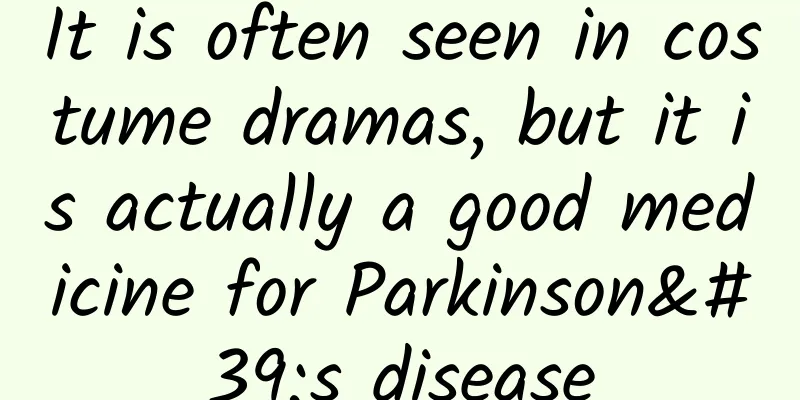It is often seen in costume dramas, but it is actually a good medicine for Parkinson's disease

|
My knowledge of knockout drugs began with reading "Water Margin". It saw that a small packet of white flour was secretly sprinkled into the wine and stirred gently, which could make people drunk. As a young child, I was both curious and frightened. After studying medicine, I found out that the main ingredient of the knockout drug is actually a plant that looks very beautiful and intoxicating, and is called the flower of love. The key is that this plant can also treat Parkinson's disease and motion sickness. It is Datura stramonium. There are a lot of this kind of plant in my hometown, with clusters of it in ditches and on roadsides. Its fruit is covered with small green thorns, which will cause pain and itching if they prick people. Traditional Chinese medicine believes that Datura stramonium is pungent and warm in nature, poisonous, and enters the heart, spleen, and lung meridians. It has the effects of relieving cough and asthma, relieving pain and antispasmodic. It is often used for cough with no or little phlegm, rheumatism, bruises, cold pain in the heart and abdomen, epilepsy and other diseases. Modern pharmacological research has shown that the main ingredient of Datura stramonium is scopolamine (dong lang dang jian), which acts on the human central nervous system, causing sedative, hypnotic and anesthetic effects, making people drowsy, sleepy and lose their memory; on the other hand, it acts on the human periphery, inhibiting glandular secretions, such as sweat glands, tear glands and salivary glands, thereby reducing sweating. Perhaps this is the original meaning of "knocking potion" - to prevent sweating. However, this plant, which is very harmful to humans, can also cure diseases and save lives if used properly. It can be used clinically to anesthetize patients by utilizing its sedative and hypnotic effects. From the earliest Ma Fei San developed by Hua Tuo to the preoperative anesthesia of traditional Chinese medicine in the 1970s, this plant was the main one used. Its sedative effect can also be used to relieve the symptoms of Parkinson's disease and motion sickness (such as carsickness, seasickness, etc.). It can also be used to relieve arteriovenous spasm and bring patients in early shock back to life. It seems that everything in this world has two sides, and the key is to make good use of it. |
<<: The "general" in traditional Chinese medicine is really effective
>>: This kind of "human face" will definitely leave you the deepest impression
Recommend
Is it necessary to build giant starships so that humans can fly out of the solar system and into deep space?
Almost all science fiction movies and TV shows de...
Why are there so many rocks floating in the vast universe? How many planets are made of rocks?
This article is based on answering a question fro...
The efficacy and function of dog tendon vine
What are the functions of dog tendon vine? As a t...
The efficacy and function of wound medicine
Chinese medicine has different effects on our bod...
The efficacy and function of Jianshenqu
Jianshenqu is a common Chinese medicinal material...
Is the excitement you feel during a date real or is it a "suspension bridge effect" designed by the other party?
Review expert: Taozi National Psychological Couns...
The efficacy and function of large-leaf chicken chrysanthemum
Large-leafed chicken chrysanthemum is a very fami...
Cancer is caused by "saving"! Doctors reveal the truth! This bad habit must be changed
Experts in this article: Hu Houxiang, Chief Physi...
Shen Xu | You who protects the young
Bullying in schools is not just a children's ...
The efficacy and function of the immortal staff
Since Chinese medicine has fewer side effects, mo...
Middle-aged people die of melanoma. The "effect" of ultraviolet rays is beyond your imagination.
The benefits of ultraviolet light to people go fa...
Stop it! If these parts of your body are too clean, you are harming yourself!
We have been taught since childhood Be hygienic a...
The efficacy and function of rock pine
Rock pine is a common type of traditional Chinese...
There is no vacuum in the universe, so what exactly is vacuum?
The word "vacuum" is not unfamiliar to ...



![The efficacy and function of Cornus officinalis[picture]](/upload/images/67ca0b27359b4.webp)





